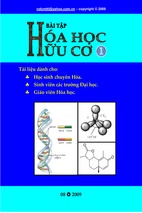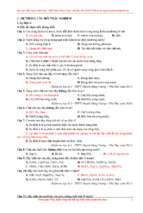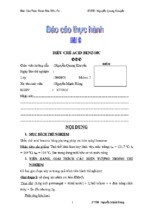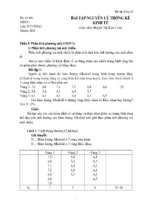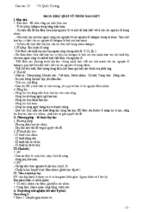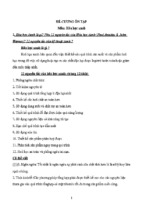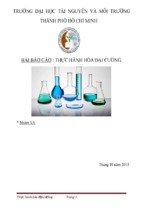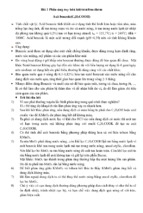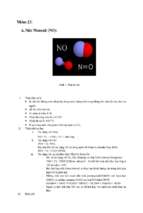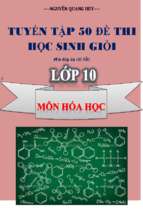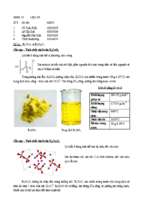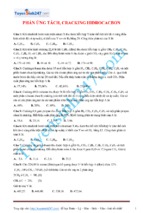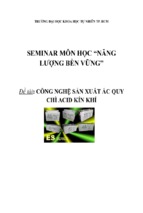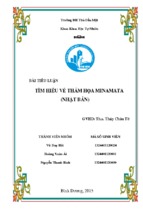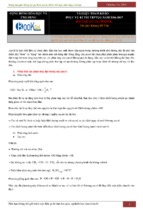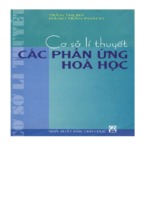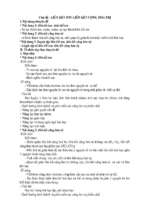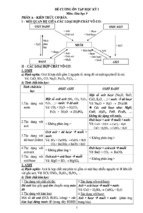INSTRUMENT ENGINEERS’ HANDBOOK
Fourth Edition
Process
Software
and Digital
Networks
BÉLA G. LI P TÁ K , E d itor-i n- Ch ief
H A LI T Er En, Volu me E d itor
INSTRUMENT ENGINEERS’ HANDBOOK
Fourth Edition
Process
Software
and Digital
Networks
VOLUME III
INSTRUMENT ENGINEERS’ HANDBOOK
Fourth Edition
Process
Software
and Digital
Networks
VOLUME III
Béla G. liPták, Editor-in-Chief
Halit ErEN, Volume Editor
MATLAB® is a trademark of The MathWorks, Inc. and is used with permission. The MathWorks does not warrant the accuracy of the text or exercises in
this book. This book’s use or discussion of MATLAB® software or related products does not constitute endorsement or sponsorship by The MathWorks
of a particular pedagogical approach or particular use of the MATLAB® software.
CRC Press
Taylor & Francis Group
6000 Broken Sound Parkway NW, Suite 300
Boca Raton, FL 33487-2742
© 2012 by Béla Lipták
CRC Press is an imprint of Taylor & Francis Group, an Informa business
No claim to original U.S. Government works
Version Date: 20110713
International Standard Book Number-13: 978-1-4398-6343-5 (eBook - PDF)
This book contains information obtained from authentic and highly regarded sources. Reasonable efforts have been made to publish reliable data and
information, but the author and publisher cannot assume responsibility for the validity of all materials or the consequences of their use. The authors and
publishers have attempted to trace the copyright holders of all material reproduced in this publication and apologize to copyright holders if permission
to publish in this form has not been obtained. If any copyright material has not been acknowledged please write and let us know so we may rectify in any
future reprint.
Except as permitted under U.S. Copyright Law, no part of this book may be reprinted, reproduced, transmitted, or utilized in any form by any electronic,
mechanical, or other means, now known or hereafter invented, including photocopying, microfilming, and recording, or in any information storage or
retrieval system, without written permission from the publishers.
For permission to photocopy or use material electronically from this work, please access www.copyright.com (http://www.copyright.com/) or contact
the Copyright Clearance Center, Inc. (CCC), 222 Rosewood Drive, Danvers, MA 01923, 978-750-8400. CCC is a not-for-profit organization that provides
licenses and registration for a variety of users. For organizations that have been granted a photocopy license by the CCC, a separate system of payment
has been arranged.
Trademark Notice: Product or corporate names may be trademarks or registered trademarks, and are used only for identification and explanation
without intent to infringe.
Visit the Taylor & Francis Web site at
http://www.taylorandfrancis.com
and the CRC Press Web site at
http://www.crcpress.com
Dedicated to our colleagues and to our profession of automation engineering. It is hoped
that by applying the knowledge found on these pages, we will make our industries more
efficient, safer, and cleaner, and thereby will not only contribute to a happier future for
all mankind, but will also advance the recognition and respectability of our profession.
Béla Lipták (http://belaliptakpe.com/)
CONTENTS
Preface xiii
Acknowledgments xxiii
Contributors xxv
Definitions xxix
Abbreviations xlix
Organizations lix
1
2
Process Control and Automation 1
1
Distributed Control Systems and Process Plants 5
Mark Nixon
2
Networks in Process Automation: Hardware Structures and Integration of Process
Variables into Networks 40
Peter G. Berrie and Klaus-Peter Lindner
3
Instrumentation in Processes and Automation 72
Donald Chmielewski and Miguel J. Bagajewicz
4
Programmable Logic Controllers 90
Sujata Agashe and Sudhir D. Agashe
5
SCADA—Supervisory Control and Data Acquisition System and an Example 101
Hiten A. Dalal
6
Intelligent Instruments and Sensors: Architecture, Software, Networks,
Protocols, and Standards 130
Deniz Gurkan and Halit Eren
7
Calibrations in Process Control 141
Halit Eren
8
Standards in Process Control and Automation 150
Halit Eren
9
Automation and Robotics in Processes 158
Arif Sirinterlikci, Arzu Karaman, and Oksan Imamog̀lu
Process-Control Methods 169
10
Batch-Process Automation 172
Asish Ghosh
ix
x Contents
3
4
11
Plant-Wide Controller Performance Monitoring 200
Chris McNabb
12
Plant Optimization 228
Michael Ruel
13
Neural Networks in Process and Automation 254
R. Russell Rhinehart
14
Fuzzy Logic Control in Processes and Automation 265
R. Russell Rhinehart
15
Internet in Automation and Process Control Systems 275
Babu Joseph and Deepak Srinivasagupta
16
Telemetry Systems: Phone, Radio, Cellular, and Satellite 284
Curt W. Wendt
Digital Techniques and Data Handling 301
17
Digital Technology Fundamentals, Microcontrollers, Microcomputers,
and FPGAs in Processes 303
Cesar Ortega-Sanchez
18
Signal Processing in Process Control and Automation 313
Emre Deniz Eren and Halit Eren
19
Data Acquisition Fundamentals 330
David Potter and Halit Eren
20
Analog and Digital Signal Transmission in Processes: Protocols and Standards 342
Ian H. Gibson
21
Data Acquisition: Buses, Networks, Software, and Data Handling 351
David Potter
22
Data Reconciliation and Software Methods for Bias Detection 364
Miguel J. Bagajewicz and SR Derrick K. Rollins
Software, Programming, and Simulations 383
23
Software Fundamentals 385
Halit Eren
24
Virtual Plants: Process Simulation and Emulation 391
Hironori Hibino
25
Virtual Reality Tools for Testing Control Room Concepts 406
Asgeir Droivoldsmo and Michael Louka
26
Model-Free Adaptive Control Software 415
George S. Cheng and Steven L. Mulkey
27
Operation Optimization with Sequential Empirical Optimization
and Software Implementation 438
Carlos W. Moreno
28
Data Historian 454
Irena Yee and Halit Eren
Contents xi
5
6
7
Networks, Security, and Protection 461
29
Computer Networks: LANs, MANs, WANs, and Wireless 465
Hura Gurdeep
30
Internet Fundamentals and Cyber Security Management 484
Hura Gurdeep
31
Network Security, Threats, Authentication, Authorization, and Securing Devices 506
Wenbin Luo
32
VPN, CCN, and IT Support 517
Burhan Basaran and Cengiz Burnaz
33
Fiber-Optic Network Components 525
Jin Wei Tioh, Mani Mina, Robert J. Weber, and Arun K. Somani
34
Fiber-Optic Communications and Networks 546
Martin Maier
35
Network Access Protection 565
Dinesh C. Verma
36
Comments on Cyber Security in Industrial Control Systems and Automation 571
Jacob Brodsky and Joseph Weiss
Fieldbus Networks 575
37
Fieldbuses 578
Lucia Seno and Stefano Vitturi
38
HART Networks 587
David S. Nyce
39
Foundation Fieldbus: Features and Software Support 598
Salvatore Cavalieri
40
PROFIBUS Networks 616
Peter G. Berrie and Jochen Müller
41
Industrial Ethernet and TCP/IP-Based Systems 636
Gianluca Cena, Stefano Scanzio, Stefano Vitturi, and Claudio Zunino
42
Niche Fieldbus Networks 654
Lucia Seno and Stefano Vitturi
Process Management, Maintenance, Safety,
and Reliability 671
43
Network Security Awareness, Management, and Risk Analysis 674
Helen Armstrong
44
Manufacturing Execution Systems 689
Zameer Patel
45
Auditing and Upgrading Plants, Control Rooms, and Networks 698
Bridget A. Fitzpatrick
46
Hazardous Areas: Classifications, Equipment, Purging, and Management 706
David S. Nyce
xii Contents
8
47
Safety in Processes: Rules, Standards, Certification, Culture, and Management 716
Asish Ghosh
48
Reliability, Redundancy, and Voting Systems 736
William Goble
49
Computerized Maintenance and Maintenance Management 746
Pete Peter W. Ralph
Process Control and Automation Applications 757
50
Manufacturing, Plant, and Production Management: Applied in Automobile
Industry 762
Paulina Golinska and Marek Fertsch
51
Control Systems and Automation in Steel Thixoforming Production 781
Ahmed Rassili and Dirk Fischer
52
Processes and Automation in Dairy Industry 797
Sudhir D. Agashe and Sujata Agashe
53
Software for Pharmaceutical Automation 803
George C. Buckbee
54
Process Automation in the Automotive Industry 809
Vivek Hajarnavis
55
Mine-Wide SCADA System 821
Erik Bartsch
56
Application of Artificial Intelligence and Fuzzy Logic in Mineral Processing:
Hydrocyclones 840
Kok Wai Wong and Halit Eren
57
Computer Control in Mining and Extractive Metallurgy 847
Greg Baiden and Sirkka-Liisa Jämsä-Jounela
58
Telemetry Control and Management of Water Treatment Plants 858
Curt W. Wendt
59
Design and Implementation of a Safe and Reliable Instrumentation
and Control System in Oil and Gas Industry 870
Harvindar S. Gambhir
60
Power Network Security 880
Nian Liu
61
Nuclear Plant Instrumentation and Control System Performance Monitoring 903
Hashem M. Hashemian
62
Alternative Energy I: Control Software Needs of Renewable Energy Processes 919
Béla Lipták
63
Alternative Energy II—SCADA System for Thermal Power Plant 930
Mihai Iacob, Gheorghe-Daniel Andreescu, and Nicolae Muntean
64
Alternative Energy III—Wind Energy 940
Gordon Smith
Appendix 951
A.1
A.2
International System of Units 953
Engineering Conversion Factors 963
Contents xiii
A.3
A.4
A.5
A.6
A.7
A.8
Chemical Resistance of Materials 985
Composition of Metallic and Other Materials 993
Steam and Water Tables 997
Friction Loss in Pipes 1005
Tank Volumes 1013
Partial List of Suppliers 1017
PREFACE
I thank Dr. Halit Eren for his fine work in editing the fourth
edition of the third volume of the Instrument Engineers’
Handbook (IEH). I also thank his daughter, Pelin Eren and
colleague Cesar Ortega-Sanchez, who assisted him in this
major task, as well as the coauthors of this volume for their
valuable contributions.
This edition covers the software and the digital networks
that are used to monitor, control, and automate the various industrial and nonindustrial processes. As to the other
volumes of the three-volume IEH set, the fourth edition of
Volume 1 covered measurement and analysis, while Volume
2 dealt with control and optimization. Now, when the fourth
updating edition of all three volumes is completed and is
available in both printed and electronic forms, we will start
working on the fifth edition of IEH.
Each updated edition of the three IEH volumes requires
about a decade to prepare, so the fifth edition is expected to
be completed only by 2020. We will start that effort by first
updating Volume 1, which should be completed in about 3
years (in 2014). If you or one of your colleagues is knowledgeable about a sensor or an analyzer and would like to contribute to this fifth edition of Volume 1 by either updating
an existing chapter or by preparing a new one that would
describe an instrument that did not exist 10 years ago, please
contact me at
[email protected], http://belaliptakpe.com//.
After some comments by the volume editor, Dr. Halit
Eren, I will tell you about the birth of IEH and will share
with you some observations concerning the present state of
our profession and its future goals.
NOTES BY THE EDITOR OF THIS VOLUME
This volume provides an in-depth, state-of-the-art review of
control software packages that are used in plant optimization,
control, maintenance, and safety. Automation and control
systems are evolving rapidly with more and more applications of intelligent instruments, enhanced networks, use of
the Internet, virtual private networks, and integration of control systems with the main networks used by management,
all of which operate in a global environment. This holistic
approach is convenient and efficient, but it also introduces
cyber and local network security problems that need to be
addressed by effective technical solutions and proper management policies and practices.
Conventional control networks, such as fieldbuses, do not
operate as stand-alone and isolated entities. They are—or if
not already can be made—a part of a larger network through
the use of virtual networks. If given permission or access,
they can be controlled and operated by anyone anywhere in
the world. This volume highlights the technological, management, and cultural aspects of network security.
Nowadays, almost every device is software driven. Some
single chips comply with international standards, contain
memory and intelligence, and are often embedded in the
manufactured products. This introduces network security
problems.
This volume is organized in eight parts, each containing
a number of related chapters. Part I discusses SCADA and
PLC systems that are still at the heart of industrial control.
Process automation–related national and international standards are also discussed together with topics like calibration.
Part II covers software used in the automation and optimization of batch and continuous processes. It also covers artificial intelligence, the Internet, and telemetric operations.
Part III focuses on digital systems and describes the fundamentals of signal processing, data acquisition, data handling,
signal transmission, data reconciliation, and bias detection techniques used in digital hardware. Part IV explains
the fundamentals of software used in process simulations,
control room design, and virtual reality. In addition, modelfree adaptive control and optimization are also discussed.
Part V discusses networks and network security as part of
the World Wide Web. It also covers virtual networks and
the fundamentals of Internet access protection and security
from a technological, organizational, and cyber attack point
of view. Part VI focuses on fieldbuses and on wireless technology used in the form of LAN, WAN, or satellite systems.
In addition to HART, Foundation Fieldbus, Profibus, and the
industrial Ethernet are also discussed. Part VII covers the
xiii
xiv Preface
use of networks as used by managers to make economic and
financial decisions as well as production planning, maintenance, etc. It also covers network security from a managerial
point of view and discusses MES, CMMS, reliability, redundancy, and voting systems. Part VIII gives 15 examples of
software applications from a number of industries, including
automobile, mining, renewable energy, steel, dairy, pharmaceutical, mineral processing, oil, gas, electric power, utility,
and nuclear industries.
HISTORY OF IEH
In 1956, as a 20-year-old university student in Hungary, I was
one of the freedom fighters who tried to end Soviet occupation.
Our efforts were similar to the fight to liberate America in the
war between 1775 and 1781. The difference was that George
Washington won, while Imre Nagy was hanged and 3% of
the Hungarians—mostly well-educated young people—were
either killed or became refugees. I was one of them.
My first job in America was to work for Sam Russel, who,
during World War II, led the effort to develop a synthetic rubber industry after the Japanese cut off our natural rubber supply from Indonesia. By the end of the war, American trucks
were rolling on synthetic rubber tires and Sam was already
thinking about starting an engineering design firm (C&R)
with the goal of developing a plastics industry. In the late
1950s, he hired me to work for him as an instrument engineer
in a department that, at that time, had only three engineers.
I tried to learn all that was available in this new profession of automation. I read all there was to read, attended
every conference, and in a couple of years knew a lot about
stuff like frequency domain analysis. As to practical knowledge of measurement and control, I had to learn on my own
or from people like Greg Shinsky and Donald Eckman.
One day, Sam Russel asked me if I would take over our
fast-growing instrument department. I said that at the age of
25 and with my thick Hungarian accent I would not be able
to lead experienced engineers twice my age. I volunteered
instead to accept his offer only if I could hire the best graduates from the best universities and if Sam allowed me to
teach them. This I proposed to do by taking every Friday and
instead of working on the jobs, I would teach them the profession and bring them “up to speed” that way. He said OK.
Later in the early 1960s, Nick Groonewelt—a Dutch
American who still parted his hair in the middle and was running a publishing company—visited my office and noted the
tall piles of paper on my desk. “What are these?” he asked.
“My Friday notes, which I teach from,” I replied. “Why don’t
you use a handbook of your profession?” he asked. “Because
there is none that is any good!” was my reply. “Well, let’s
publish these Friday notes then!” And this is how the IEH
was born.
In preparing the first edition that was published in 1969,
I asked the Nobel laurate Edward Teller to write a preface for
it. “Why should I? I know nothing about your profession!” he
replied. “Because everybody knows that you are Hungarian
and I want the readers to know that the IEH is a Hungarian
contribution to American science!” I said. Ede bácsi (uncle
Edward) went to the library, spent a whole weekend there, and
wrote a preface that turned out to be much better than this one.
AUTOMATION AND CONTROL ENGINEERING
Ours is a very young profession. Compared to other fields
of engineering, we were way behind. When the first edition
of the IEH was published, Marks’ Mechanical Engineers’
Handbook was in its fifth edition and Perry’s Chemical
Engineers’ Handbook was in its sixth edition! It is partially
for this reason that people are more aware of what a mechanical engineer or a chemical engineer does, whereas they have
no idea what we do. When I say that my field is process control or instrumentation, all I get is a blank stare.
It is time for us to change that. The first step would be to
use a name for our profession that people understand, such as
“automation.” It is also time for our profession to develop a
distinct identity.
When I was teaching at Yale University, my course was
offered under the chemical engineering department. This
was not because Yale had anything against our profession,
but because they did not even know that it exists. Even this
handbook provides an example as to the confusion about our
identity, because CRC/Taylor & Francis Group will be publishing this handbook in their electrical engineering series.
Once again, this is not due to any bias against our profession,
but rather it reflects our failure to develop a distinct identity!
“Automation” is a term that the wider public understands,
and I am glad that ISA changed its name to International
Society of Automation (ISA).
DEVELOPMENTS OVER THE LAST DECADES
These days, computers are our main tools of control, and it
is the software that makes computers useful. The chapters
of this volume describe how computers are being used in
optimizing our processes, providing self-diagnostics, and
displaying status information in operator-friendly formats.
Today, we can fully automate the safety of our processes, we
can eliminate the need for manual actions by panicked operators following the instructions of greedy management, and
thereby we can prevent oil spills, nuclear accidents, and the
use of our air and waters as garbage dumps.
During the last decade, the artificial separation between
the plant’s control, logic, and business needs has disappeared
and have gradually been integrated. The operating software
of the future will support all needs of a process; not only will
digital networks become wireless, digital bus protocols will
also become the same around the world, eliminating the need
for interfacing and the associated risk of mix-up, not to mention the creation of captive markets. This situation is being
Preface xv
improved by the Open Network Foundation (ONF), which
was established by the big technology companies who agreed
to blur the distinctions between networks and to establish a
common standard for all of them.
In the following text, I will review some of the developments that have already occurred during the last decade:
IS THE AGE OF THE PID OVER?
Designating a valve on a flow sheet as a temperature control
valve (TCV) will not suspend the laws of nature and will
not, for example, prevent the valve from affecting the process
pressure. Similarly, the number of available control valves
manipulating a process does not necessarily coincide with
the number of variables we need to control. Our plants do not
produce pressures and temperatures; they manufacture products. Therefore, our goal must be to optimize the safety and
efficiency of our plants and let the pressures and temperatures
serve those goals. To realize this, multivariable herding or
envelope control should gradually replace the uncoordinated
single-loop controllers, while decoupling the interactions and
considering the relative gains among the controlled variables.
The result of this trend will be the unit operation controller
(UOC), which will control such subsystems of the plant like a
boiler, distillation column, or a compressor as a single system
and treat their flows, temperatures, etc. only as constraints of
the operating envelope. Most UOCs will use model-based control utilizing both steady-state and dynamic models to predict
and correct unsafe process responses before they occur. In this
regard, artificial neural networks (ANN), artificial intelligence,
statistical process control, fuzzy logic, empirical optimization,
and other future strategies will play an important role.
Advances have also been made in the use of set point
for different processes. This is often replaced by a set point
gap, so that as long as the controlled variable is within that
gap, the output is unaltered. This tends to stabilize sensitive
loops such as flow, or even faster loops like missile guidance.
Another aspect in which the set point is treated differently
today is its effect on the controller output. In many algorithms, a change in set point does not change the proportional
or derivative contributions to the output, because the P and D
modes act only on the measurement.
In other algorithms, while the set point change does affect
the integral contribution to the output, it is “feed-forwarded”
directly to the output to minimize reset windup. Reset windup
is also minimized by external feedback taken from the slave
measurement in case of cascade loops, from the valve signal
in case of selective loops, and from the inverse model in case
of feed-forward loops.
DYNAMICS, DEAD TIMES, AND MODEL-BASED CONTROL
For traditional quarter amplitude damping in PID control, we
kept the gain product of the loop at about 0.5. This meant
that if the process gain doubled, the controller gain had to
be cut in half (Figure P.1 on page xiv). This understanding
was important to the control of nonlinear processes like heat
transfer, chemical reaction, pH, etc.
Similarly, in the past we understood that in PID control the integral and derivative settings are a function of the
dead time. Therefore, we reduced the loop dead time to a
minimum and kept it constant. This was not always possible,
because the dead time varied with load (e.g., because transportation lag varied with flow as it displaced fixed volumes);
so when the dead time was large, we replaced the regular PID
algorithm with sample-and-hold or predictor algorithms.
Today, the trend is to use some type of control models
when optimizing unit operations. A variety of software packages are available using model-based or model-free control.
They can be model predictive control (MPC) or internal
model control (IMC) packages, if they deal with well-understood processes such as heat transfer or distillation processes.
If the process is not well understood and is very complex,
model-free expert systems can be used. These systems operate and learn like tennis players who do not understand
Newton’s laws of motion or the aerodynamic principles that
determine the behavior of a tennis ball, yet learn by past
experience. All the neural network–based “trainable” software packages mimic this method of learning.
Neural networks, fuzzy logic, and statistical process control are all such model-free methods of control. The major
difference between fuzzy logic and neural networks is that
the latter can only be trained by data, but not with reasoning. In this respect, fuzzy logic is superior, because it can be
modified both in terms of the gain (importance) of its inputs
and in terms of the interactions of its inputs.
The main limitation of all model-free expert systems is
their long learning period (which can be compared to the
maturing of a child) and the fact that their knowledge is based
solely on past events. Consequently, they are not prepared to
handle drastic changes in the controlled process. Therefore,
if the nature of the process changes from what it used to be,
they require “re-training.”
ARTIFICIAL NEURAL NETWORKS AND HERDING CONTROL
ANNs can either be applied under human supervision or can
be integrated with expert and/or fuzzy logic systems. Figure
P.2 on page xiv shows a three-layer ANN, which serves to
predict the boiling point of a distillate and the Reid vapor
pressure of the bottoms product of a column. Such predictive
ANN models can be valuable, because they are not limited
by either sensor error or by the dead time of analyzers.
The “personality” of the process is stored in the ANN by
the way the processing elements (nodes) are connected and
by the importance assigned to each node (weight). The ANN
is “trained” by example, and therefore it contains the adaptive mechanism for learning from example and the ability to
adjust its parameters based on the knowledge that is gained
xvi Preface
Gv
Load
Valve gain
(Gv)
m1
+
Controller
gain
(Gc)
Gc
+
For stable
control:
Gc× Gv×Gp×Gs =0.5
Gp
Process
gain
(Gp)
Load
Load
(U)
m
Load
e
+
–
c
b
Sensor
gain
(Gs)
Set
point (r)
Gs
Load
FIG. P.1
After an upset that produces cycling, in order for a traditional PID loop to cut the amplitude of each succeeding cycle in half, the gain
product of the loop had to be about 0.5.
RVP in
bootoms
Distillate
95% bp
Output layer
(2 nodes)
Hidden layer
(4 nodes)
Input layer
(9 nodes)
Bias
Feed
flow
Bottoms
flow
Distillate
flow
Feed
temp
Steam
flow
Bottoms
temp
Top
temp
Pressure
Reflux
temp
FIG. P.2
A three-layer ANN can be used to predict the quality of overhead and bottoms products in a distillation column.
Preface xvii
ANN
controller
w
+
–
u
y
Process
ef
+
ANN
model
–
em
Filter
FIG. P.3
ANN control with self-training of the ANN model.
through adaptation. The hidden layers help the network to
generalize and even to memorize. During the “training” of
these networks, the weights are adjusted until the output of
the ANN matches that of the real process.
The ANN can “learn” both the input–output relationships between variables and the inverse of these relationships.
Hence, ANN can be useful in building IMC systems using
ANN-constructed plant models and their inverses (Figure P.3).
When a large number of variables are to be kept within
some limits, but only one is to be kept on set point, the use of
model-free herding control can be considered. This approach
to control can be compared to what the shepherd’s dog does
when it goes after one animal at a time and changes its direction or speed, thereby keeping the herd together or moving it
in the right direction.
I applied this herding algorithm in designing the controls
of the headquarters building of IBM (590 Madison Ave) in
New York City. The goal in this case was to herd the warm
air to the perimeter (to offices with windows) from the offices
that even in the winter were heat generators (interior offices).
Thereby, the building became self-heating. This was done
by changing the destination of the return air from the interior offices by first directing it to the supply air header of the
perimeter offices.
In general, herding control is effective if there are thousands of manipulated variables and they all serve some common goal, in this case the reduction of the building’s energy
consumption.
THE AUTOMATION ENGINEER (AE) AND COMMON SENSE
An AE’s best tool is common sense and his or her best teacher
is Murphy who says that anything that can go wrong, will. In
this regard, I will list here some advice and observations:
• Before an AE can control a process, he or she must
fully understand it.
• Being progressive is good, but being a guinea pig is
not. Bad design implemented by advanced hardware
is still bad.
• Management should be told what they need to hear
and not what they like to hear.
• Increased safety is gained through backup. In case
of measurement, reliability is increased by the use
of multiple sensors, which are configured through
median selectors or voting systems.
• If an instrument is worth installing, it should also be
worth calibrating and maintaining. No device can outperform the reference against which it was calibrated.
• Sensors with errors expressed as percent of the actual
reading are preferred over those with percent of fullscale errors.
• It is easier to drive within the limits of a lane than
to follow a single line. Similarly, control is easier and
more stable if the single set point is replaced by a control gap.
• Constancy is the enemy of efficiency. Optimization
requires efficient adaptation to changing conditions.
• Trust your common sense, not the sales literature.
Independent performance evaluation (SIREP-WIB)
should be done before installation and “business
lunches” should wait until after start-up, not before
the issue of the purchase order.
• Annunciators do not correct emergencies; they just
throw the problems that designers do not know how
to fix into the laps of the operators. The smaller the
annunciator, the better the design.
ROLE OF THE AE PROFESSION IN THE
THIRD INDUSTRIAL REVOLUTION
Here, I will describe what I hope our profession will accomplish in the next decade. I would not be surprised if by the
end of the twenty-first century, we would be using self-teaching computers. If this comes to pass, some might argue that
this would be a step forward, because machines do not forget;
do not get tired, angry, or sleepy; and do not neglect their job
to watch a baseball game or to argue with their wife on the
phone. This might be so, yet I would still prefer to land in a
human-piloted airplane.
xviii Preface
In addition to new control tools, we will also have new processes to control. As we enter the third Industrial Revolution
and convert to an inexhaustible and renewable energy economy, the AE will meet new challenges (see Chapter 62). One
such challenge will be to control regular and reversible fuel
cells. The fuel cell is like a battery, except that it does not
need recharging, because its energy is the chemical energy
of hydrogen, and hydrogen can come from an inexhaustible
source, namely, the splitting of water by solar energy. The
challenge involves not only the control of the electrolytic process in the fuel cell, but also the storage and transportation of
solar energy in the form of hydrogen.
In the past, it took decades to reach an agreement on the
standard analog signal ranges of 3–15 PSIG (0.2–1.0 bar)
and later on the 4–20 mA DC. Yet, when these signal ranges
were finally agreed upon, the benefit was universal. Similarly
today, the time is ripe for a single standard for digital communication protocols to link all the digital “black boxes,”
software packages, and networks and to eliminate the need
for all interfacing.
Protocol is the language spoken by our digital systems.
Unfortunately, there is no standard currently in place that
allows all devices to communicate in a common language,
but work on the creation (and universal acceptance) of a fieldbus standard has started.
There is nothing wrong with, say, the Canadians having
two official languages, but there is something wrong if a pilot
does not speak the language of the control tower or if two
black boxes in a refinery do not speak the same language. Yet
the commercial goal of manufacturers was to create captive
markets and this resulted in different control-oriented protocols, as follows:
AS-Interface
HART
PROFIBUS
Found. Fieldbus
ControlNet
MODBUS
Ethernet TCP/IP
www.as-interface.com
www.hartcomm.org
www.profibus.org
www.fieldbus.org
www.controlnet.com
www.modbus.org
www.industrialethernet.com
During the last decade, HART has become the standard for
interfacing with analog systems while Ethernet was handling
most office solutions. SCADA served to combine field and
control data to provide the operator with an overall view of
the plant. While there was no common DCS fieldbus protocol, all protocols used Ethernet at the physical and TCP/IP at
the Internet layer. MODBUS TCP was used to interface the
different DCS protocols.
The layers of the communication pyramid were defined in
several ways. OSI defined it in seven layers, with layer 1 being
the physical and layer 7 the application layer (layer 8 being
used for the “unintegrated,” external components). The IEC61512 standard also lists seven levels, but they base their levels
on physical size as follows: (1) control module, (2) equipment,
(3) unit, (4) process cell, (5) area, (6) site, and (7) enterprise.
As I noted earlier, in the everyday language of process
control, the automation pyramid consists of four layers: layer
1 is the level of the field devices, the sensors, and actuators;
layer 2 is control; layer 3 is plant operations; and layer 4 is the
level of business administration.
Naturally, it is hoped that in the next decade, uniform
international standards will replace our digital Babel, so that
we can once again concentrate on controlling and optimizing
our processes.
SOFTWARE OUTSOURCING AND CONNECTIVITY PROBLEMS
The job of AEs can also be complicated by the commercial
practices of some suppliers. For example, some suppliers sell
their systems without including all the software that is needed
to operate them. This is wrong. To treat software as an extra
and not to include the unique control algorithms, faceplates,
and graphic displays in the basic package can lead to serious problems. Another reoccurring problem is the quality of
the instruction booklets. These instructions are often written
in the language of programmers (“computerese”) that is not
spoken or understood by plant operators.
In some proposals, one might also read that the stated
cost is for “hardware with software license.” This would suggest that the operating software for the DCS or other systems is included. In most cases, however, it is not and only
its license is.
Similarly, when the proposal states that an analyzer, an
optimization, or a simulation package requires “layering,” or
can be implemented in the “eighth layer,” one might think that
the bid contains eight layers and that they are fully integrated.
Yet, what this actually means is that the cost of integrating
these packages into the overall control system is an extra.
So, on the one hand, while the plant-wide digital networks
and the advanced control strategies they support provide
great opportunities for optimization, on the other hand, AEs
must be very careful in making sure that all the pieces of the
digital puzzle are provided and will conveniently fit together.
The control systems of most newly built plants consist of
four levels of automation. The first level supports the local
instruments (sensors, valves, motors, safety devices), including the intelligent and self-diagnosing ones. This first level
can be connected by a number of data highways or network
buses to the second level, which is the level of control. The
third level serves plant operations and the fourth the enterprise-wide business. In addition, wireless hand tools are used
by the roving operators, and external PCs are available to
engineers who introduce or modify control or simulation
models and algorithms.
NEED FOR MORE MEANINGFUL SPECIFICATIONS
The professional organizations of AEs, such as ISA, should
issue uniform performance testing and calibration criteria to
Preface xix
be used throughout the industry. This is needed, because in
the sales literature today, the meanings of the terms stating
the instrument’s inaccuracy, repeatability, or rangeability
are rarely based on individually calibrating and testing each
device, and the statements seldom describe the calibration
procedures and the reference devices used.
Even such terms as “inaccuracy” or “error” are often
given without stating if these statements are based on fullscale or on actual readings. Also the validity of the published
performance data is seldom checked by reliable third parties. If third parties do check them, their findings are seldom
published. Therefore, it is difficult for the user (the AEs) to
determine or compare the expected performance of various
manufacturers’ products.
Also, it would be desirable that the rangeability of all sensors be stated and guaranteed. Rangeability is the range—the
reading at full scale divided by the reading at the minimum
reading of a detector (such as 10:1 or 20:1)—across which the
inaccuracy of the sensor or other instruments is guaranteed.
The sales literature of all manufacturers should always publish their accuracy (which is actually inaccuracy) statements
on this basis and should always state the rangeability of their
products.
It would also be desirable if the sales literature stated
the basis of the “accuracy statement” in terms of the testing
that was used to arrive at them. This is important, because
it makes quite a difference if the performance of all sensors
were individually tested or only “sampling testing” was performed. Also, besides accuracy, rangeability, and calibration
information, the performance statement should include linearity, hysteresis, drift, and the effects of variations in ambient temperature, supply voltage, humidity, RFI, vibration, or
the maximum over-range that the detector can be exposed to.
CONTROL VALVE PERFORMANCE
In the next decade, much improvement is expected in the area
of final control elements, including smart control valves. This
is a welcome development, because the performance of the
control valve is affected not only by trim wear, stem sticking,
or packing friction but also by the misoperation of its actuator, limit switch, valve position detector, or positioner. The
tuning and stability of the control loop also depends on the
gain characteristics of the valve and the accuracy of the gain
(linear or nonlinear) that the manufacturer guarantees.
If the control valve is nonlinear (its gain varies with the
valve’s opening), the loop will become unstable if the load
changes (is different from the load that existed when the loop
was tuned). For this reason, the loop gain must be compensated for by the gain characteristics of the valve and such
compensation is possible only if the valve characteristics are
accurately known.
For these reasons, it is desirable that the manufacturers
accurately test and state in their sales literature the characteristics of their valves. The other performance capabilities,
such as the rangeability of control valves, should also be
stated. For example, a valve should be called linear only if its
gain (Gv) is constant across its stated range.
The valve manufacturers should also publish the stroking
range (minimum and maximum percentages of valve openings) within which the claimed valve gain is guaranteed (for
a linear valve it is Fmax/100%). Similarly, valve rangeability
should be defined as the ratio of the minimum and maximum
valve Cvs at which the valve characteristic is what it is specified to be.
Finally, and most importantly, the sales literature should
state if the performance data are based on individual testing
and if the testing was performed by measuring the actual flow
through the valve and the stem position throughout its range.
SMART CONTROL VALVES
A traditional valve positioner serves only the purpose of
keeping a valve at its intended opening. Intelligent (digital)
control valves, on the other hand, provide the ability to collect and analyze the valve performance data, including valve
characteristics and performance trends over time.
Smart positioners also provide (wired or wireless) twoway communication to enable diagnostics of the entire valve
assembly. Section 6.12 in Volume 2 of this three volume
handbook set provides detailed information on the capabilities of intelligent control valves and their suppliers.
The capabilities and use of smart valves are likely to
increase with time and to include the ability to measure variables such as their own:
•
•
•
•
•
•
Upstream pressure
Downstream pressure
Temperature
Valve opening position
Actuator air pressure, etc.
Flow
Smart valves will also be able to eliminate converter errors
(digital-to-analog or analog-to-digital conversions) and will
be able to update their data at least 10 times per second. They
could also be equipped with filters to remove fluctuations
caused by turbulence or other effects.
Eventually, smart valves should be able to measure the
flow passing through them if their stem positions and trim
characteristics as well as the properties of the flowing fluid
(up- and downstream pressure, density, viscosity, temperature, turbulence, etc.) are accurately known. In such a case,
the smart valve can calculate and display its own flow by solving various equations used in valve sizing. For details, see
Section 6.15 in Volume 2 of this three volume handbook set.
The smart valves of the coming decades will hopefully
be able to measure the flow over a range which exceeds
the rangeability of most flowmeters, because they in effect
are differential pressure flowmeters operating on variable

